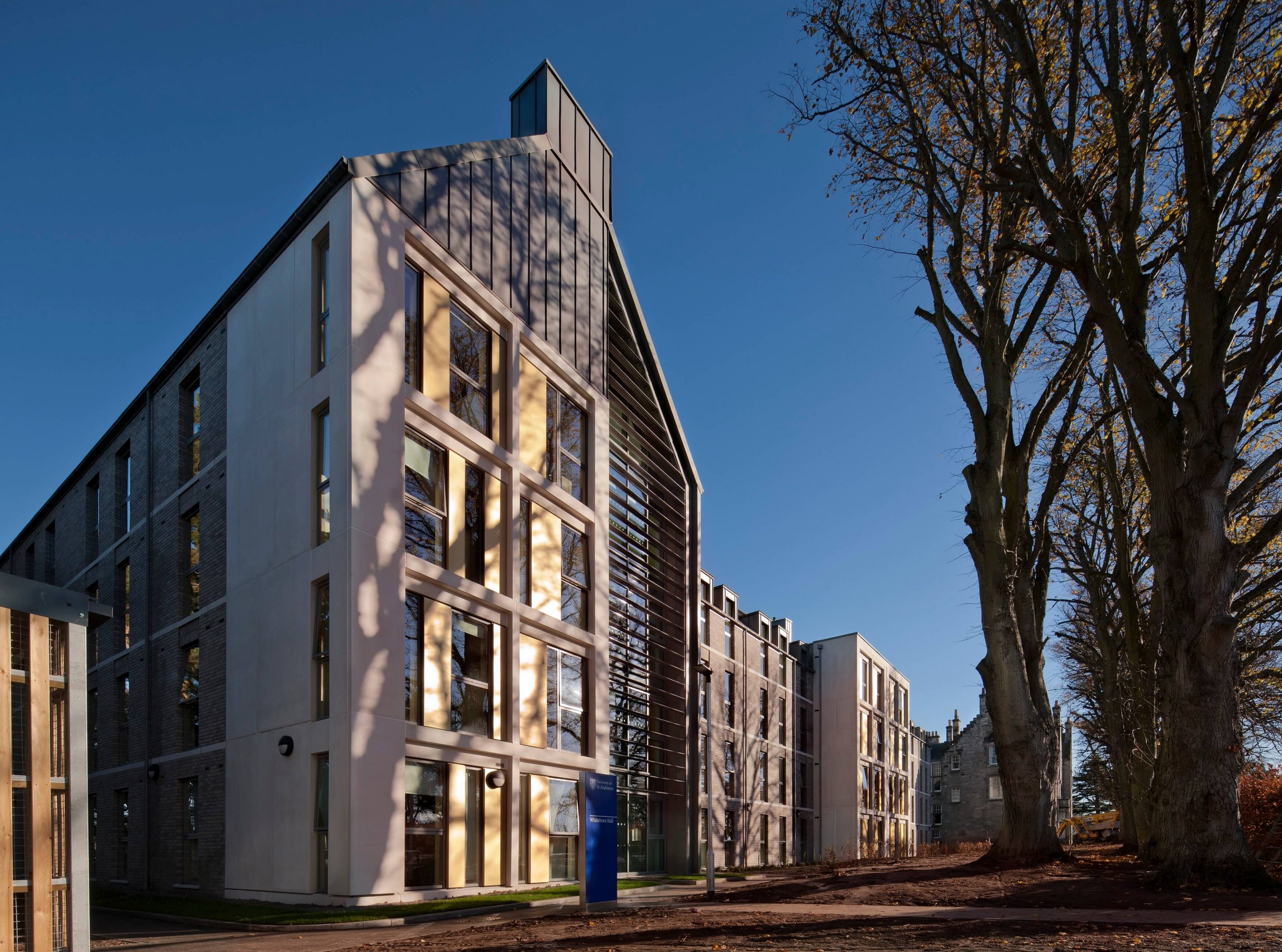With a growing student population, the university wanted to relieve pressure on housing within the centre of St Andrews, in particular shared student houses, to help free up properties for local people.
With this in mind, the university formed a joint venture with Campus Living Villages and asked HLM Architects to design two new buildings to provide additional on-campus accommodation for 400 students.
Both Whitehorn Hall and Powell Hall were designed and constructed within a very challenging timescale of under two years to get them ready for the new academic year in 2018.
Creating a place to live,
learn and grow
The brief from the university was to create high-quality student accommodation and build communities where students could meet, learn and socialise, while also supporting academic and personal growth.
As well as the bedrooms, each residence offers communal and social spaces designed to encourage students to gather together. Double height spaces create a sense of arrival and contrast with smaller study areas.
Both the buildings were designed using Archicad.
Achieving planning permission for Whitehorn Hall was tricky as the building is next door to a category B listed hall. However, having the Archicad model to show the planners really helped; we were able to show them our designs and allow them to interrogate the model during the planning process.
Adam McAvoy – architect at HLM

Whitehorn Hall was designed to reflect and reinforce the character and feel of the adjacent B listed university hall. Located in a constrained site within the Hepburn Gardens Conservation Area, HLM set the new building back from the road so that it wouldn’t dominate the vista. The architects chose contemporary zinc for the roof together with grey brickwork and polished concrete to complement the nearby buildings.
Meanwhile, Powell Hall is built in a U-shape around a courtyard, with light buff solid masonry and polished concrete cladding panels. The effect is a contemporary building echoing the traditional university quads that does not detract from the surrounding architecture.
Repeated elements
speed design
The designs for the student residences included many repetitive elements. Across the two buildings, there are three types of bedroom and six different types of communal space such as shared kitchens and living areas.
Powell Hall has 205 bedrooms, all with en-suite bathrooms. Meanwhile, Whitehorn Hall was designed with 184 bedrooms, a combination of en-suite and standard rooms which have shared bathroom facilities.
The time-savings achieved by using Archicad to design such a scheme were significant.
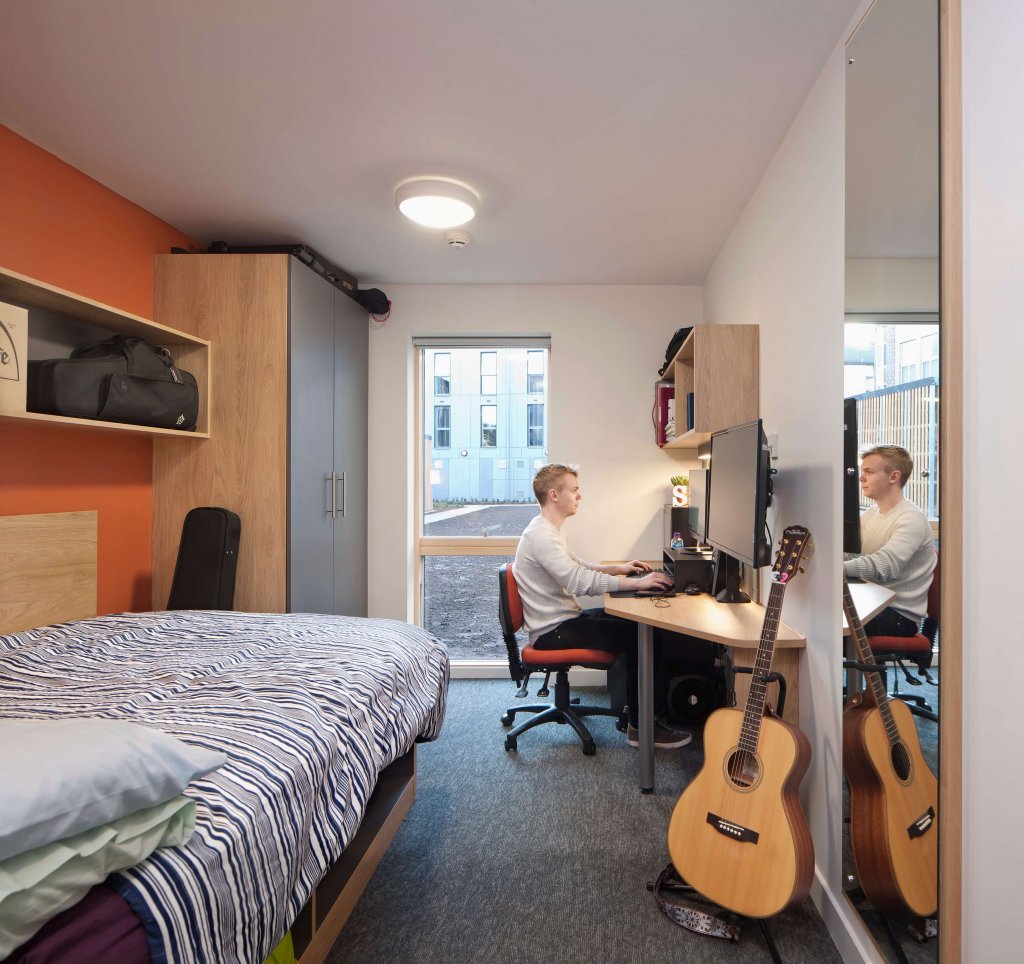
Photo: Peter Harbour Photography 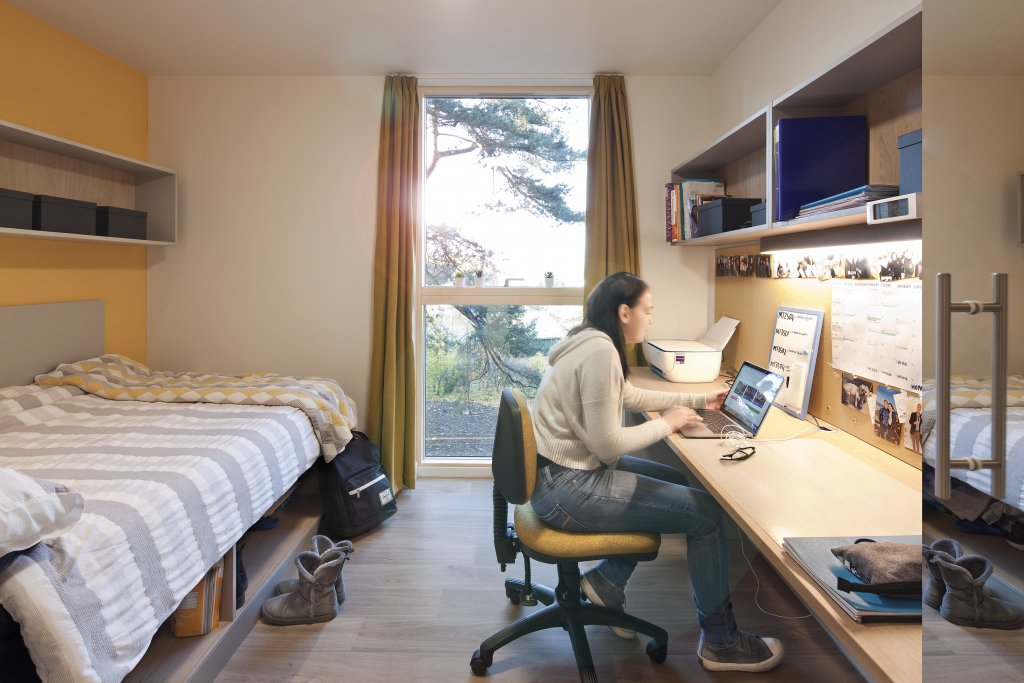
Photo: Peter Harbour Photography
“Using Archicad, we were able to create a fully detailed design for each type of room just once. We then hot-linked it into the model. If anything was then updated in one of the rooms, it would automatically update across all the others, saving us a huge amount of time.”
Adam McAvoy
Team collaboration
and BIM workflow
HLM uses Graphisoft’s Teamwork which allows multiple architects to collaborate on a project together. The team had eight architects in the Glasgow studio working collectively on the project, all accessing the model via a local BIM server.
We assigned team members to work on different parts of the model at the same time. It all worked seamlessly.
In this case BIM was a real enabler on the project. It improves efficiency in all processes with everything kept in a single model. For example, when the contractor needed to make changes due to budget constraints, we were able to very quickly implement those changes.
Although BIM wasn’t mandated on this project, HLM uses a BIM workflow as a matter of course across all projects.
Prefabrication
and coordination
Archicad was particularly useful for ensuring that the prefabricated elements of the buildings were a perfect fit. For Whitehorn Hall, space was very tight, so the architects had to optimise every inch to fit as many bedrooms in as possible.
Models from the roof truss designer, the steel subcontractor and the concrete cladding subcontractor were all coordinated into the Archicad model with information shared via IFC.

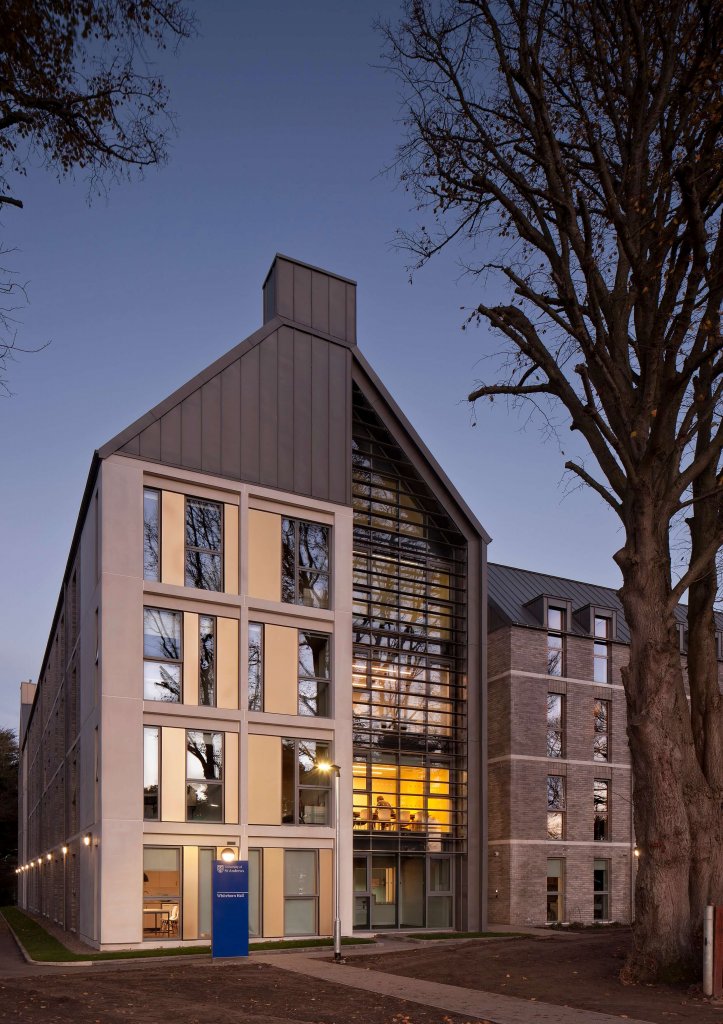
Coordination of the steel work and roof structure were particularly important. The roof dimensions were critical due to the gutter detailing to avoid clashes with opening the dormer windows. Once IFC from the roof truss manufacturer had been imported, we were able to adjust the roof geometry to suit our design.
Being able to bring the subcontractor models directly into Archicad in this way not only ensured accuracy but also sped up the process significantly.
In Powell Hall, 205 bedrooms each had a vent, all of which needed to be coordinated in the facades and in the steelwork. The envelope was manufactured off site and every opening had to line up perfectly. Similarly, for Whitehorn Hall, concrete cladding panels were pre-cast off site before being brought to site and installed.
Fast-track construction
with architect on site
Due to the exceedingly tight timescales, Adam was based on site for three months during construction, working alongside main contractor Sir Robert McAlpine.
Initially, the contractor had asked for an architect to come to site for two weeks to work through a particular stage of construction. However, having found the process so valuable, this was eventually extended to three months.
Using Archicad, HLM prepared a combined architectural and subcontractor model for the contractor to use.
I took a laptop to site and ran the live model in situ. Any issues with coordination could be fixed straight away. It was hugely beneficial to work in this way and was absolutely key in helping to meet our tight deadlines.
Adam McAvoy
We were all there for the same goal: to complete the project on time and within budget. I was able to remote desktop directly into the studio, chat to the team there, and update the model live on site.
Whilst on site, HLM regularly used the 3D sectional cutaway tool within Archicad. This enabled the architect to easily show the contractor how all the different subcontractor elements came together in the model.
These things would have been almost impossible to explain without Archicad. We would have had to have three sets of drawings on screen at the same time. But the cut-through meant the contractor could immediately see what we were referring to.
Adam McAvoy
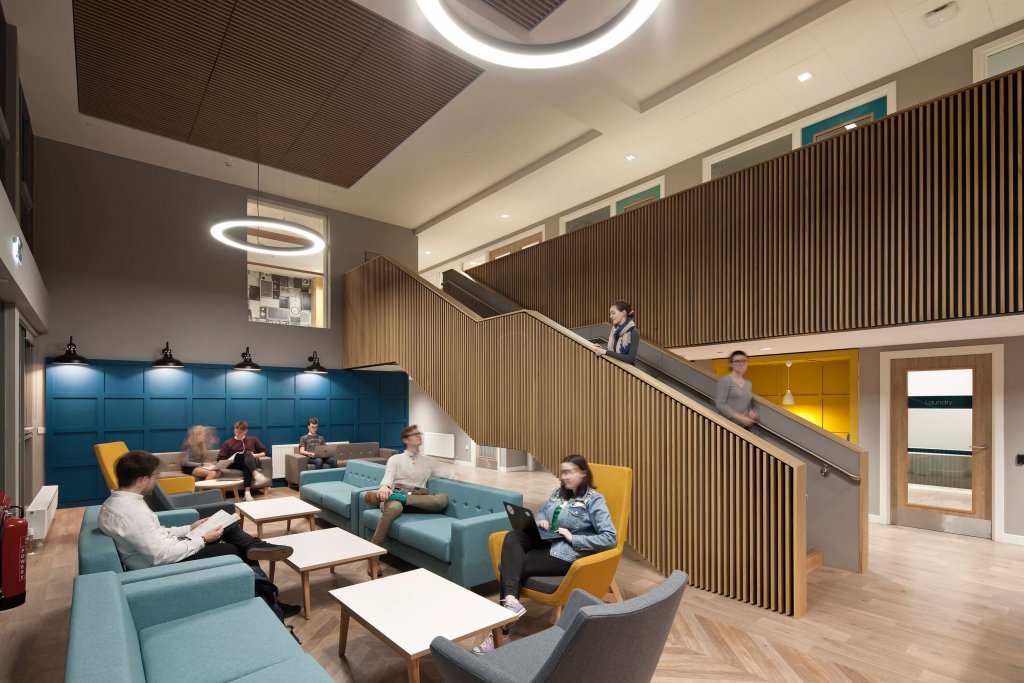
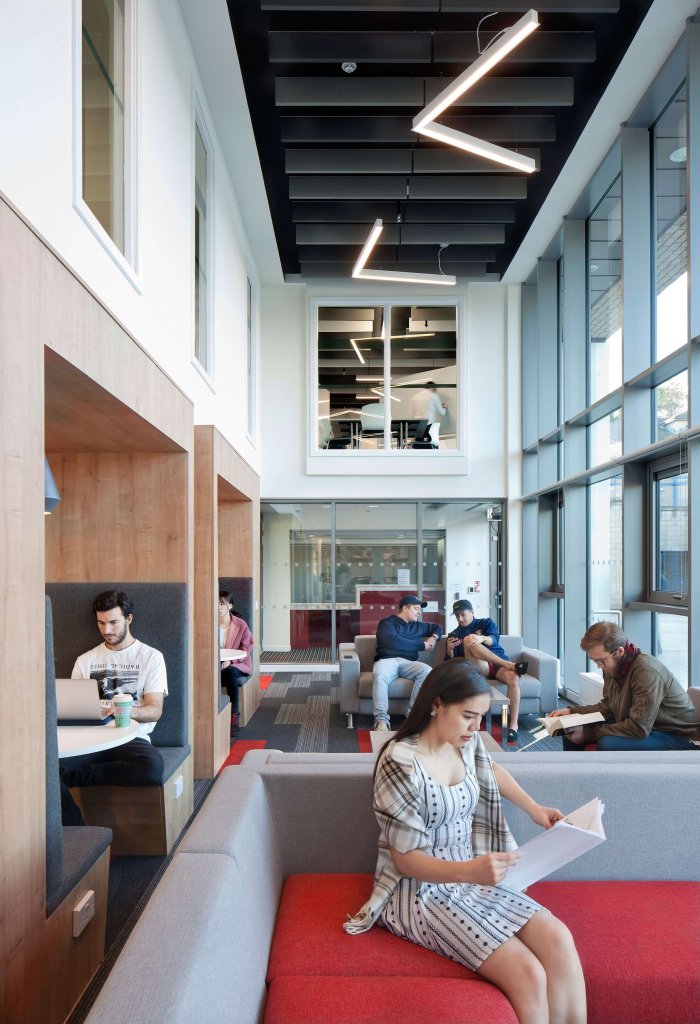
Following a fast-track 12-month build, both residences were ready for students to move in during October 2018, less than two years after HLM had drawn up the initial concept designs.
Awards
- Whitehorn – WINNER Scottish Design Awards 2019
- Whitehorn – WINNER Scottish Property Awards Student Development of the Year
- Whitehorn – Shortlisted GIA Awards 2019
- Powell – Shortlisted Scottish Property Awards 2020
- Whitehorn & Powell (together) – Shortlisted RICS Social Impact Awards 2020
- Whitehorn & Powell (together) – AJ Awards 2019 Shortlisted
- Whitehorn & Powell (separately) – Saltire Housing Design Awards 2019 Shortlisted
About HLM Architects
HLM Architects is an international design practice offering architecture, landscape architecture, urban design, master planning, interior design and sustainability services.
The company is one of a handful of architecture firms that have a presence in all parts of the UK, with studios in Belfast, Cardiff, Glasgow, London, Manchester and Sheffield. HLM also has studios in Abu Dhabi and Dubai.
The company’s work spans the private and public sectors, including health, education, defence, justice, hospitality, workplace & civic and living & communities. It has strong expertise in many procurement routes including partnering and frameworks.
For more information visit the website: www.hlmarchitects.com
Follow HLM on Twitter: @HLMArchitects
About Graphisoft
Graphisoft® ignited the BIM revolution in 1984 with Archicad®, the industry first BIM software for architects. Graphisoft continues to lead the industry with innovative solutions such as its revolutionary BIMcloud®, the world’s first real-time BIM collaboration environment; and BIMx®, the world’s leading mobile app for lightweight access to BIM for non-professionals. Graphisoft is part of the Nemetschek Group.
